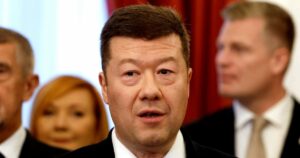CHINA is seeking to buy more Russian gas through an existing pipeline as talks between the two countries have failed to make progress on building a second link, thwarting Moscow’s quest for new outlets.
Energy is expected to be high on the agenda when Russian and Chinese leaders Vladimir Putin and Xi Jinping meet in China during the Shanghai Cooperation Organisation summit.
A breakthrough on the US$13.6-billion Power of Siberia 2 pipeline project to supply 50 billion cubic metres (bcm) of gas to China‘s northwest during the visit is unlikely, however, the sources said.
Instead, they say China is considering increasing its purchases of gas via the existing Power of Siberia 1 pipeline from the current 38 bcm.
Two industry sources who told Reuters on the issue could not be named because they were not authorised to speak publicly on the issue.
Russia is keen to expand oil and gas exports to Asia after losing European markets because of Western sanctions in response to its invasion of Ukraine.
For more than 50 years, Russia has supplied gas to Europe from West Siberia, which used to provide 180 bcm a year, or up to 40 per cent of Europe’s gas needs, generating up to US$90 billion a year for Moscow.
Russia began deliveries to China in 2019 from East Siberia via the Power of Siberia 1 pipeline.
The West and East Siberian producing areas are not yet interconnected and Moscow hopes to reroute gas from West Siberia to China by building the Power of Siberia 2 pipeline.
Gazprom originally designed the pipeline to try to make China and the EU compete for gas from those fields.
The project became even more important for Moscow after the EU halted most of Russian gas imports in 2022 following Russia’s invasion of Ukraine.
Moscow and Beijing, however, have failed to agree on pricing for the gas and funding for the pipeline despite more than a decade of talks.
Gazprom did not respond to requests for comment.
China’s growing domestic gas output and production of renewables have cut its appetite for energy, although geopolitical risks such as sanctions make inland imports from Russia more attractive, said Tatiana Mitrova from Columbia University’s Centre on Global Energy Policy.
Gazprom and China National Petroleum Corporation are in talks to boost supplies via the Power of Siberia 1 pipeline by 6 bcm per year from 2031, a Beijing-based industry source said.
CNPC did not respond to a request for comment.
The new supply could generate US$1.5 billion a year for Gazprom, based on a price of gas of US$250 per 1,000 cubic metres, according to Reuters calculations.
China’s state-owned infrastructure monopoly PipeChina has launched a study to expand its domestic network in preparation for receiving more gas via the Power of Siberia 1 pipeline, a second Beijing-based industry source involved in the studies said.
Construction could begin in the second half of 2026, the executive added.
PipeChina did not respond to an emailed request for comment.
Russia and China are discussing raising flows via the Power of Siberia 1 to 45 bcm, said Sergey Sanakoev, the head of the Asia-Pacific Research Centre in Moscow, who has been involved in Russia-China talks on energy.
Gazprom has said the pipeline can pump more than its nameplate capacity of 38 bcm.
“It doesn’t mean that Power of Siberia 2 will be abandoned,” Sanakoev said.
Russia is also due to start supplying China with gas via a pipeline from the Pacific island of Sakhalin in 2027. The plans call for supply of 10 bcm per year.
* The writers are from Reuters
© New Straits Times Press (M) Bhd






